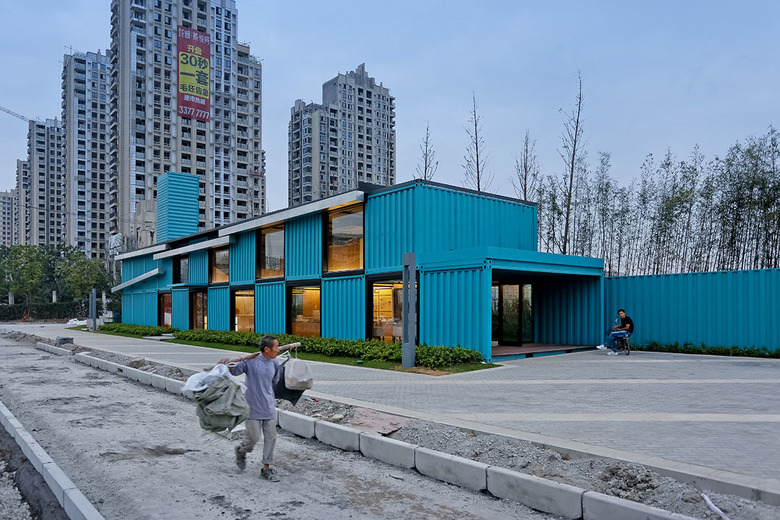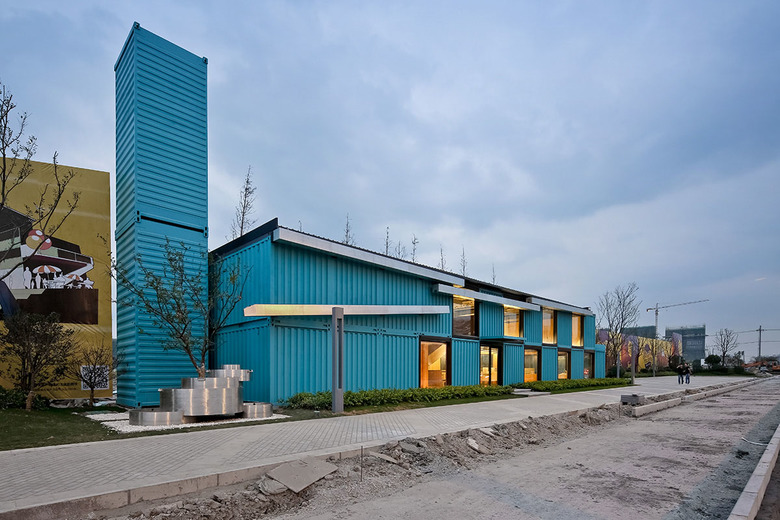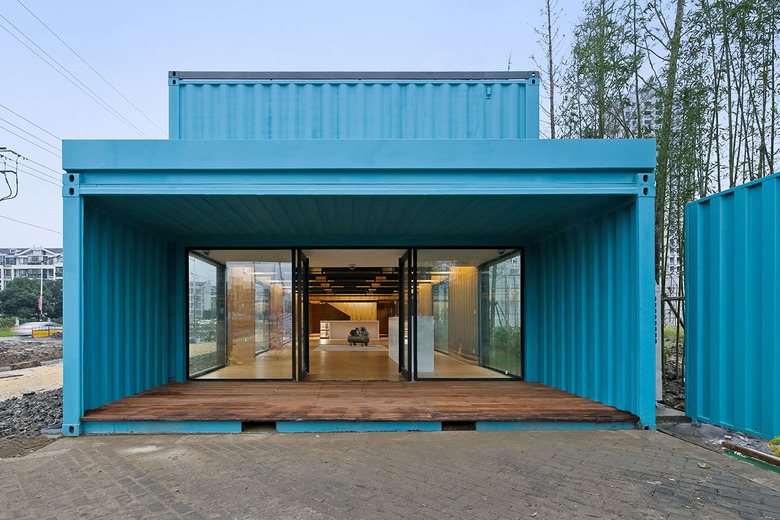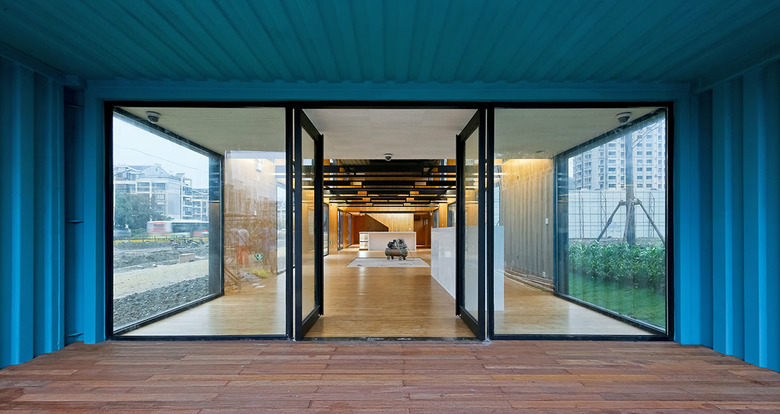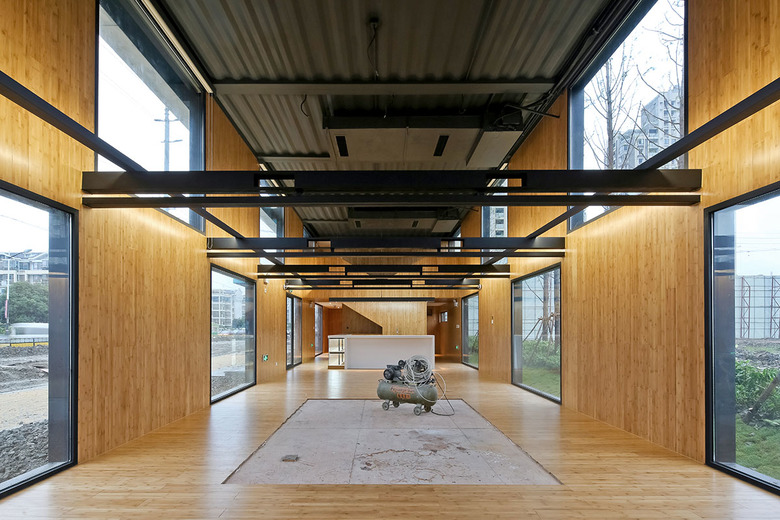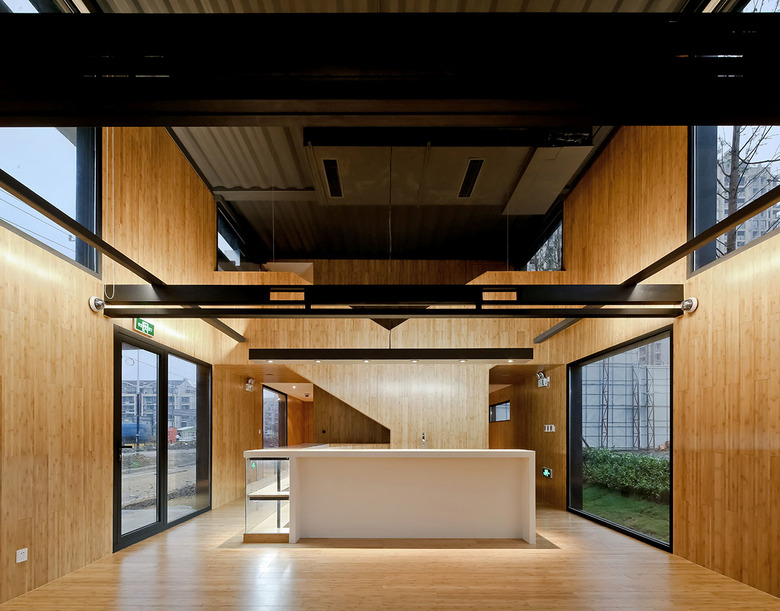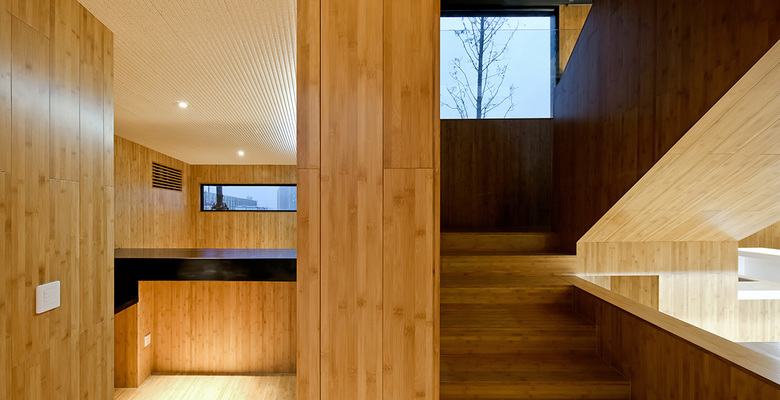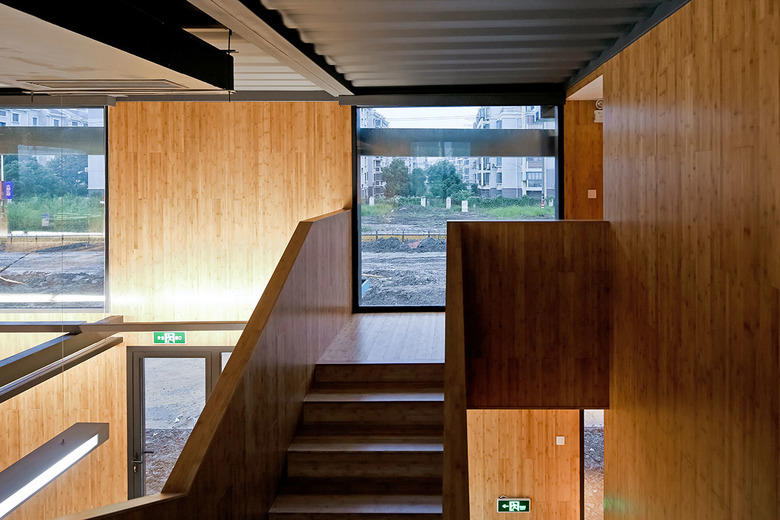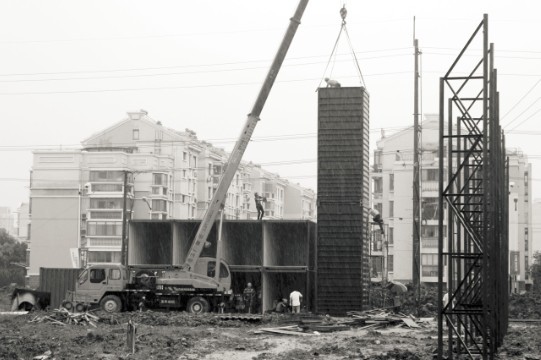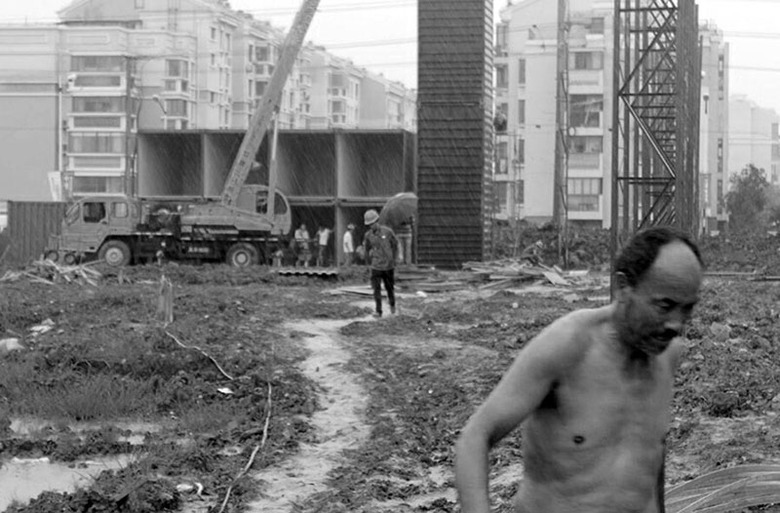CONTAINER SALE OFFICE
Shanghai
- Architetti
- ATELIER XUK
- Anno
- 2014
The project is located at Qingpu district of Shanghai. It is a temporary sale office for a mix-use commercial complex to the west of it.
The site of the project is also temporary: it is situated in-between 2 lines, one is the road redline and the other is the building set-back line. The width of it is 10m and it stretches along the north and south direction. When the whole development is finished, the site will be taken by the set-back green. However, the life of the sale office will end even before that: when the commercial complex to the east side of it starts, it will be already taken by the excavation of the basement. As a result, the sale office will be only used for about one year.
The client decided to adopt container construction system as the main building system under this specific site situation. Adoption of this system will guarantee speed and efficiency. The simple and straight-forwardness of its architecture expression will also match with the identification of the development.
Limited budget of the project forced us to focus on one very practical question at the beginning of the design:how to enclose the maximum building area ( or volume ) with the minimum usage of containers. Answer to this basic question leads to a basic offset-piling method. We adopted the offset-piling method to save the number of the containers and forms a maximized atrium space for location of the site-model and the business discussion area. The atrium is double-height and facing south as the main entrance, it is symmetrical. It`s simple and strong space order is a result of rational design approach. Tectonic of the building is clearly expressed both for the exterior and exterior space.
Offset-piling method gives the atrium space a staggered positive-negative space interface: Positive interface for the walls, negative interfaces for the openings. During the day time, negative interfaces, as for the openings, provide the atrium space with light and views; at night, with our customized florescent wall washers, positive interfaces, as for the walls, are lighted up and provide the atrium space with light and a strong presentation of materiality. The walls and the openings, the positive and the negative interfaces swap their roles at different times of a day, while the structure of the space is integrated.
To the north of the building located the back-of-house program: cashier, toilet, changing room, administration and so on. These program are well organized and stacked in 2 floors in an efficient manner.
In between the atrium and the back-of-house program, we designed a sculpture-like staircase. In terms of its geometry, it is a delicate balance of symmetry and asymmetry. In terms of circulation and visual experience, it is used as a transition between the front and the back area.
We introduced an additional element, an unified, one-direction inclined roof to cover the whole building. Addition of this element is the logic result of several considerations: in terms of the architectural expression, we would like the building to be more like a “house”, instead of just a pile of containers; In terms of the tectonics, we prefer to have another unified element to pair with the concrete foundation of the building, in terms of construction, the offset-piling method requires an additional coverage to form a total enclosure, in terms of the physical performance of the building, the space that is defined by the original container roof and the additional roof is perfect for location of the insulation layer, to guarantee comfort for the interior space.
Drainage issue needs also to be considered. In our project, we regard drainage pipes as one important tectonic element, instead of a mere part of infrastructure. The pipe is divided into four parts, each of which has a proper length that could be easily transported by mid-size trucks. These pipes are fixed to the main elevation of the building, forming a playful “trace of water” that is independent for the rigid language of the building itself. Rain water are collected by this system and concentrated to the water-fall landscape to the north of the building, and unified the landscape design with the architecture design itself.
Progetti collegati
Rivista
-
Reusing the Olympic Roof
2 days ago
-
The Boulevards of Los Angeles
2 days ago
-
Vessel to Reopen with Safety Netting
3 days ago
-
Swimming Sustainably
3 days ago
